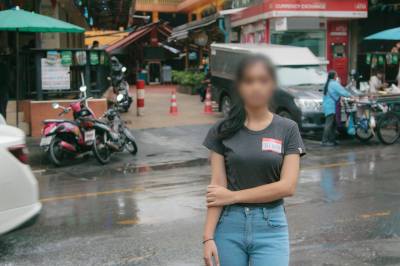Breaking the chains of cultural slavery on the International Day for the Abolition of Slavery

“I have a very messy past,” Naay began as she shared her story with the other girls in the Freedom Home.
Naay, whose name I’ve changed to protect her, fled to Bangkok, Thailand, to escape an abusive relationship. But without an education or any job prospects, she soon found herself being abused again — this time in one of the city’s booming red-light districts.
Although she didn’t wear physical chains, she was nevertheless a slave — a slave to poverty and to a society that normalized treating women like property.
Sadly, the story of Naay’s messy past is all too common in places like Thailand and India’s Banchara community. Girls find themselves with no other options, so they are forced to accept that they will have to subject themselves to exploitation night after night.
As Naay walked up and down the streets of the red-light district — even though she was surrounded by people and thudding music — she felt alone. With each night of customers, she felt that her heart was smashed into smaller and smaller pieces.
But because of generous donors, Naay was finally able to gain her freedom.
Their support led her to the Freedom Home, where she was given a safe place to live, access to medical care and counseling, and a chance to receive an education.
“When I came to [the Freedom Home], I began to put the pieces of my life back together,” Naay said. “[It] is helping me with my jigsaw puzzle.”
In addition to receiving an education and physical care, Naay also found spiritual healing at the Freedom Home.
“I am reminded of a picture I saw of this large hand with a tiny hand inside,” she said. “It reminds me of how small I am, but Jesus cares for me and I need to rely on Him more and more.”
Living in a Freedom Home with other girls from similar backgrounds, Naay doesn’t feel alone anymore.
Since someone invested in Naay and helped her escape the sex industry, she now wants to do the same for other girls. She also wants to open her own business using the education she has received.
“It is my dream to open a shop in my hometown,” she said. “I also want to have a space beside my shop where I can open a church. There are 200 factories in and around my hometown and no churches. I want to change that.”
To the tourists who used to flood the red-light district where Naay worked, she was just a number in a crowd. Literally — she wore a red button on her clothes with a number. The men who took advantage of her probably never learned her name … only that number, further dehumanizing her.
But to the people who generously gave so Naay could live at the Freedom Home, she was a person — a person worth investing in and a person worthy of freedom.
Dec. 2 was the International Day for the Abolition of Slavery. On this day, men and women around the world joined forces to fight for people like Naay facing all kinds of modern slavery including child labor, human trafficking, and sexual exploitation.
I find it notable that this day also falls during the season when we often hear those famous lyrics from “O Holy Night”: Chains shall He break for the slave is our brother. And in His name all oppression shall cease.
Christ came to earth that first Christmas to break the chains of sin and death. And this National Day for the Abolition of Slavery — right in the heart of the Christmas season — you can join the fight to break the chains of cultural and sexual slavery for people like Naay.




























